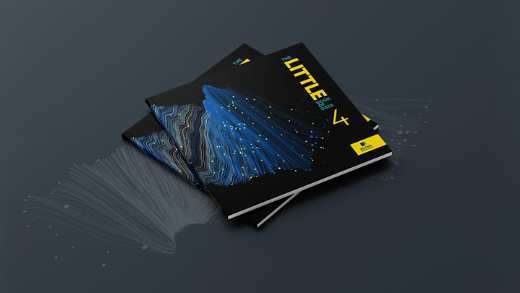In this month’s instalment of our visual series on topical themes, we look at key trends in the credit market.
Read this article to understand:
- Current inflation trends
- Investment-grade and high-yield credit yields and performance
- Rising stars and defaults
- The impact of ECB corporate bond buying
- Sustainable bond market trends
The invasion of Ukraine by Russia has added disruption to already fragile supply chains. Soaring energy and commodity prices, as well as a continued hangover from the pandemic, are in turn creating economic and inflationary challenges.
Market participants are closely watching how central banks walk the fine tightrope between keeping a lid on inflation while at the same time supporting growth. Monetary policy missteps are a real danger. With uncertainty being stoked by so many factors, credit markets are a useful indicator of where cracks might start to appear in financial markets.
Soaring inflation
Spiralling global inflation is presenting bond investors with a headache. In the UK, the Consumer Price Index (CPI) rose by 7.9 per cent in February year-on-year, the highest annualised growth since January 1982.1
Inflation has been running at four per cent or above in 65 per cent of global economies
This theme is in evidence across most developed markets; Figure 1 shows inflation has been running at four per cent or above in 65 per cent of global economies.
Figure 1: Individual countries' inflation rate versus target
Source: Aviva Investors, Bloomberg. Data as of February 28, 2020
Terminal rates usually exceed inflation. However, Figure 2 shows the Consumer Price Index is way ahead of the Federal Funds target.
Figure 2: US policy rates versus CPI (per cent)
Source: Aviva Investors, Bloomberg. Data as of February 28, 2022
While much of the focus has been on commodity price inflation, unemployment rates have fallen sharply since the pandemic, putting pressure on wages.
Figure 3: Wage growth is picking up (year-on-year percentage change)

Source: Goldman Sachs Global Investment Research, March 2021
Yields and performance
Figure 4 shows many credit markets have been highly correlated for several years. Investors have been forced out across the risk spectrum as quantitative easing and other policies have had their desired effect of keeping bond yields low. Value has been hard to find across fixed income markets and with yields typically at the lower end of their ranges investors are exposed to any repricing.
Figure 4: Fixed income yields since 2000 (percentile of range)
Source: Aviva Investors, Bloomberg. Data as of February 28, 2022
After the stampede for yield in recent years, and amid central bank-buying, long-dated investment grade (IG) credit currently offers relatively little reward for investors.
Investment-grade credit supply has been easily soaked up by market participants
IG credit supply has been easily soaked up by market participants, such as insurers and liability-driven pension schemes, as well as by central banks buying long-dated debt as part of their quantitative easing (QE) programmes. This has caused the yield curve to flatten and reduced the benefit of taking on duration risk.
Risk/reward profiles are similarly unappetising at the front end of the IG credit yield curve. Figure 5 shows the superior risk/reward profile of short-duration credit: the one- to three-year universe offers the highest yield per unit of duration risk in the IG universe.
Figure 5: The superior risk/reward profile of short-duration credit
Past performance is not a reliable guide to future performance.
For illustrative purposes. Source: Aviva Investors, Bloomberg. Data as of January 31, 2022
Recent performance has been mixed, however, with clear dispersion across markets, as Figure 6 shows.
Figure 6: Mixed credit performance (total return in per cent)
Source: Aviva Investors, Bloomberg. Data as of March 29, 2022
Rising stars and default risks
High-yield companies started 2022 with strong fundamentals: earnings had mostly recovered from the pandemic-induced shock, leverage was back to pre-COVID-19 levels and interest coverage outstripped pre-COVID-19 levels. The increase in rising stars – companies upgraded from high-yield to investment-grade status – was a theme in 2021 but the impact of the Ukraine/Russia war might stymie that trend.
Default rates have been at record lows
Meanwhile, default rates have been at record lows, but the prospect of higher interest rates and economic fragility could see them spike higher (see Figure 7).
Figure 7: Default rates (per cent)
Source: Aviva Investors, Moody’s. Data as of February 28, 2022
ECB pulls back from corporate bond buying
The European Central Bank (ECB) currently owns 28 per cent of bonds eligible for its asset purchase programmes and 12.6 per cent of the entire euro investment-grade market. In 2016 it owned none. However, with the ECB signalling the end of QE, European credit markets will have to find a new buyer of first resort.
Figure 8: ECB holdings of eligible bonds from 2016 (per cent)

Source: BofA Global Research. Data as of December 2021
According to Figure 9, the flow of credit buying from the ECB is likely to slow materially in Q2 and come to an end in July 2022.
Figure 9: The flow of credit buying from the ECB
Source: Aviva Investors, Bloomberg. Data as of February 2022
Sustainable bonds
While uncertainty may have gripped many asset classes in recent months, there seems no let up in the rise and rise of sustainable bonds, which broke an all-time record in 2021. In particular, green bond issuance totalled $488.8 billion, nearly double the amount seen in 2020.




